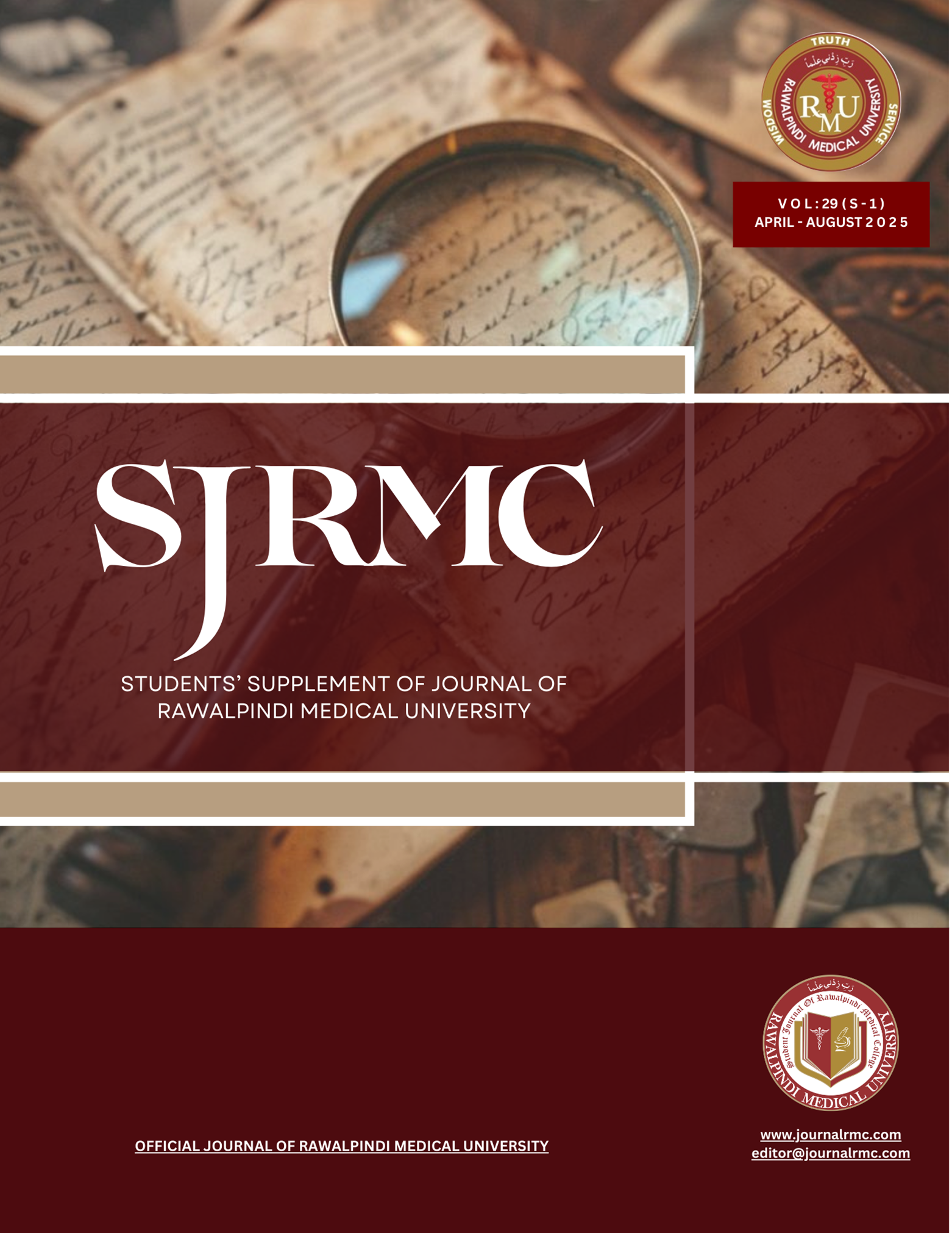Abstract
Background: Elevated blood pressure (BP) during hospitalization affects 50–70% of adults, yet no formal international guidelines exist for its management. Such elevations may indicate true hypertension, transient stress responses, or measurement inaccuracies. This study evaluated the management of hypertension in clinically stable hospitalized patients at a tertiary care center.
Methods: A prospective, observational cross-sectional study was conducted at Shalamar Hospital, Lahore, Pakistan, from November 2024 to March 2025. Adult inpatients (≥18 years) with a prior or new diagnosis of hypertension were enrolled consecutively. Data were collected at a single time point using structured questionnaires and medical record review. Statistical analysis was performed with JMP Version 13 (SAS), with p < 0.05 considered significant.
Results: Among 151 hypertensive patients (mean age 58.2 ± 12.8 years; 68.9% female), 90.7% had pre-existing hypertension and 83% were receiving treatment. Common comorbidities included type 2 diabetes (81.9%) and chronic kidney disease (13.8%). Half of the patients maintained BP < 140/90 mmHg during hospitalization, yet adverse events occurred: hypertensive urgency (5.3%), creatinine elevation (23%), and myocardial infarction (2.6%). Inpatient prescribing patterns showed significant declines in angiotensin receptor blocker use (44.4% → 36.4%, p < 0.01) and beta-blockers (19.9% → 13.2%, p < 0.05), alongside increased calcium channel blocker (38.4% → 47.7%, p < 0.01) and diuretic (7.3% → 11%, p = 0.06) use. Despite these adjustments, 25% had uncontrolled BP at discharge; 70% lacked documented outpatient follow-up, and only 19% were referred to specialist care.
Conclusion: Hypertension management during hospitalization remains challenging amid multimorbidity, acute illness, and shifting treatment priorities. The absence of formal guidelines, limited prescribing oversight, and inadequate discharge planning contribute to suboptimal control and follow-up. These findings underscore the need for clear institutional protocols, stronger inpatient–outpatient integration, and enhanced clinical support to ensure safe, consistent, evidence-based management of hospitalized patients with hypertension.

